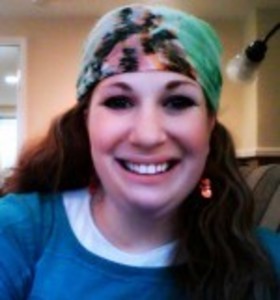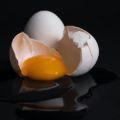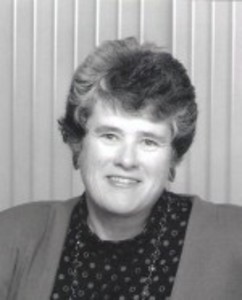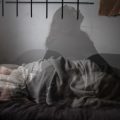Try this experiment: Google the words ‘endometriosis’ and ‘misunderstood’ and see how many results you get. Care to make an educated guess of how many you would find? 300? 3,000? Try 62,600! For those who don’t have any experience with endo this number might be shocking. But we who have suffered through the long and arduous journey of trying to find a diagnosis, 62,600 is not as staggering as it sounds.
For me, misunderstanding has been a huge part of my life with endo. Although my symptoms began at age fifteen, I was not diagnosed with endo until I was twenty six. Instead, I was misdiagnosed with chronic fatigue syndrome, migraines, bladder infections, urinary tract infections, epiploic appendigitis, kidney stones, pelvic separation syndrome, interstitial cystitis, polycistic ovaries, degenerative disks, a hernia, and the very worst, hypochondria.
Common Misdiagnoses
As I have come to understand over the years, my experience of misunderstanding and misdiagnosis is not one of a kind. In fact, according to the Endometriosis Foundation of America, most women with endometriosis have pain and present symptoms up to a full decade before being diagnosed. While symptoms have been documented as beginning in girls as early as twelve years of age, the average age of diagnosis is twenty-seven. Additionally, the National Endometriosis Society claims around two million women worldwide have undiagnosed endometriosis.
Like myself, women with endometriosis have been misdiagnosed as having a host of different diseases including interstitial cystitis and polycistic ovaries. Abdominal and bowel endometriosis is often mislabeled as inflammatory bowel syndrome (IBS) while pelvic endometriosis is confused with pelvic inflammatory disease (PID) or pelvic congestion.
Misdiagnosing Endometriosis as a Psychological Disease
Every instance in which a woman is misdiagnosed as having a different medical illness is a potential tragedy, especially because pushing off a diagnosis can place a women in greater danger of losing her fertility. Being misunderstood and called a hypochondriac, or being told that our symptoms are solely psychologically based is undeniably traumatic. Historically, the idea of blaming the patient for her symptoms has been described by Indian doctors as early as 800 BC. Doctors believed that endometriosis was a psychological issue that could be cured by a positive attitude. According to the Endometriosis Association, 70 percent of women diagnosed with endometriosis were initially told there was no physical cause for their pain, and in 1995 an average of 50 percent of women with pelvic pain were found to have no organic basis for it.
On a personal level, I was told that my physical pain was due to anxiety and depression caused by a past traumatic incident that I had yet to achieve closure on. I was placed on a low dose of tricyclics and instructed to “learn to relax”. The sad part is, both myself and my family accepted this diagnoses as truth and delayed focusing on receiving a genuine diagnosis for many months.
Why is Endometriosis Misdiagnosed?
In a qualitative interview-based study done by Karen Ballard et. al, five main reasons for misdiagnosis or delays in diagnosis were identified.
- Unlucky, not ill: Many girls and women who initially experience symptoms assume that they are just unlucky to have painful periods but have no real illness.This assumption leads them to hold back on asking for help or speaking to a doctor for fear that the will just be seen as weak. This incorrect belief is often confirmed by family members who also suffer.
- Symptoms normalized: When women finally do gather the strength to ask for help from their doctors, they are often told their symptoms are a normal part of being a women and do not need to be checked out.
- Hormones delay diagnosis: Aside from telling women that their symptoms are normal, some doctors prescribe hormones to their patients. This causes an unfortunate situation, as the hormones suppress the symptoms and cause women to believe their symptoms have improved. Women then neglect to get themselves checked out, which causes a delay in diagnosis.
- Inadequate diagnostic methods: Recently, it has come to light that the best way to diagnose endometriosis is through laparosopic surgery. Unfortunately, doctors who are uneducated about this are still using other diagnostic methods, such a trasvaginal sonograms. While sonograms can identify endometriomas, they cannot diagnose endometriosis. Utilizing inadequate diagnostic methods can cause a very large delay in diagnosis, or even worse, an incorrect one.
- Vague symptoms: Endometriosis manifests in a variety of symptoms. Those symptoms, such as pain, fatigue, bowel and bladder difficulties, and pain during sex are also symptoms of other diseases. Pelvic inflammatory disease, pelvic congestion, irritable bowel syndrome, and interstitial cystitis are a few of the many diseases that have some of the same symptoms as endometriosis. Due to this, endometriosis is often misdiagnosed as one of these other diseases.
How do we prevent misdiagnosis and delayed diagnosis in the future?
- Self-education: It is our jobs as strong, independent women to fortify ourselves with knowledge and information about our bodies, minds, and health. The more we know about ourselves, the less likely it is for us to be convinced that we are something that we’re not.
- Spread the word: Do you suffer from endometriosis? Have you stocked your brain with all there is to know about it? Let the world know! Share your experiences, knowledge and information with other women who don’t know much about the subject. The more girls and women know about endometriosis, the better their chances of receiving a correct diagnosis.
- Inform the medical community: It may come as a surprise to know that not all doctors and nurses are experts at every medical malady. Too often, when it comes to endometriosis, they have a superficial grasp of what it entails. This is due to misinformation coming from the internet, media, and even medical books. We need to take it upon ourselves to inform the medical community what we are really dealing with when we say we have endometriosis.
It’s Up to Us
While endometriosis misdiagnosis and delayed diagnosis are problems that are much more common than they should be, there are ways that we can help ourselves, and others, prevent them from happening. As long as we continue to stand up for ourselves and advocate for the rights of all women and girls with endometriosis, we are on the right track. United together, there is nothing that we endo-sisters cannot overcome in the future.
About the author. Rachel Cohen is technically a special education teacher, specializing in working with children who have autism; or at least she was until endometriosis took over her life. Now she writes, blogs and tweets about endo while taking care of her miraculous two children that she has with her equally miraculous husband; not to brag or anything. Rachel is currently gathering stories from women with endo from around the world to put together into a book. You can share your story with her, or read her blog at Endo from the Heart.





















